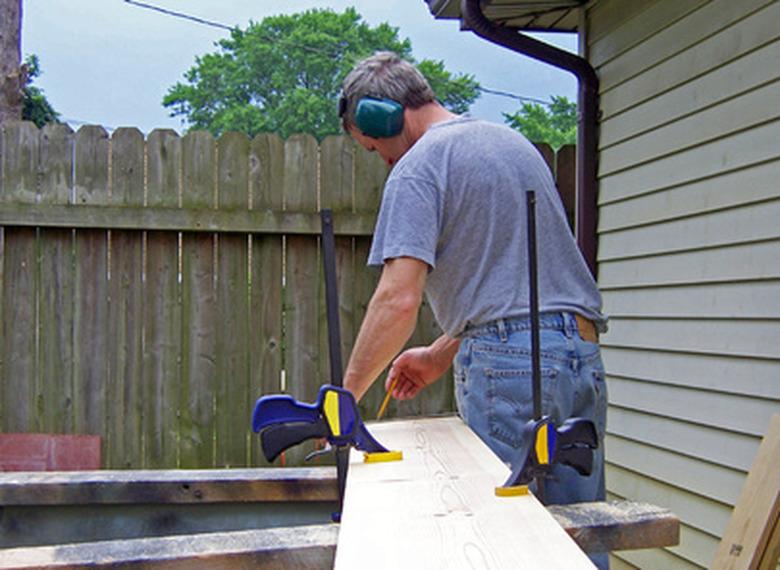What Do I Finish My Pine Boards With So They Don't Yellow?
Pine is one of the most common woods used in American homes. Most pine species appear naturally yellow, although they can appear beige at a glance. Preventing pine from yellowing beyond its fresh-cut state is almost impossible, but common oil-based polyurethane can give finished pine a deep golden tone. Even purely clear finish darkens pine somewhat. However, it is possible to minimize the natural yellowing.
Water-Based Urethane or Varnish
Water-Based Urethane or Varnish
Water-based urethane is growing in popularity and quality. It is also the least likely clear finish to add unwanted golden tones. It is milky-clear when wet and dries completely clear. Most of the pale, creamy-beige tones in pine remain, although some of the natural grain is enhanced. The primary drawback of water-based urethane is its low durability compared to oil-based products, explains expert Tim Carter of Ask the Builder. Used on floors, it scratches easily and requires more frequent refinishing than oil. However, you might be willing to live with the low durability in exchange for how quickly water-based urethane dries, its lack of toxic fumes and preservation of the wood's fresh-cut color.
Tung Oil
Tung Oil
Tung oil does little to change wood's natural color. Like all finishes, it slightly enhances some of the wood's existing yellow tones. It is non-toxic in its pure state, even safe around food, but some products have added solvents. Pure tung oil is as thick as honey and requires effort to work into the wood. It also needs several days to dry, and it can take weeks to cure hard. Solvents, which evaporate, make it thinner so it penetrates and dries more quickly. Chemical solvents emit fumes until the oil dries, but some brands replace chemicals with citrus oils. Tung oil requires several applications for the best water resistance. Once applied, it might never require total refinishing because it adheres to itself without sanding. Lovers of natural wood appreciate the way tung oil preserves the wood grain and texture without giving it a plastic-coated look.
Paste Wax
Paste Wax
If the boards will not take abuse, consider finishing the bare wood with old-fashioned paste wax for wood. Like all other finishes, it slightly enhances the natural pigment in pine. However, the result is a soft sheen with most of the original color remaining. There is no hard finish, and water and stain resistance is low. You can use paste wax on wall panel boards, ceiling boards and furniture, and also on some low-traffic floors such as bedrooms. Floor maintenance is high, and reapplying often is important to retain the protective coating,. Buffing increases the shine. Wax is slick, so never use it on a staircase.
Tinted Washes
Tinted Washes
Disguise the wood's natural color by applying a thin color wash before sealing with clear, water-based urethane. Although you sacrifice the real color of the wood, you also ward off the yellow-enhancing property of the finish. Buy a water-based stain or paint appropriate for use as a color wash, sometimes called pickling paint. Pickling paint adds a small amount of color while letting the wood grain show through. Match the natural color of the wood as closely as possible, usually with a soft blonde or beige, and apply a thin coat to the bare wood. Applying water-based urethane afterward adds shine and protection without deepening the wood's natural pigment.
